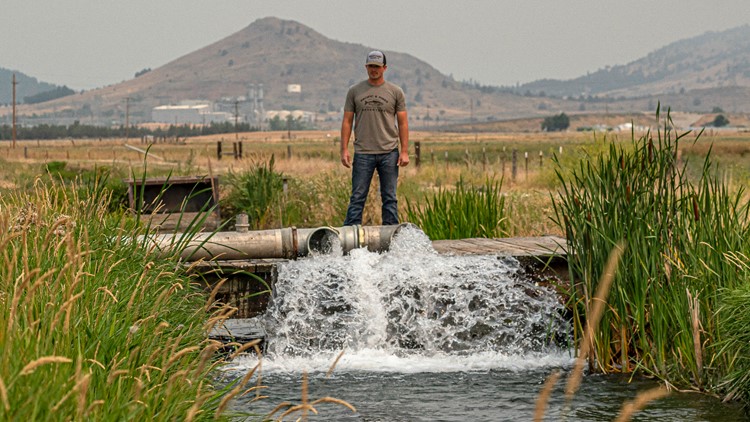KLAMATH FALLS, Ore. — The Klamath Irrigation District in Southern Oregon plans to defy a U.S. government order issued last week for a halt to water deliveries to farmers in the drought-stricken basin.
The U.S. Bureau of Reclamation manages the Klamath Project, which includes Klamath Irrigation District and serves 266 square miles (689 square kilometers) of farmland around the Oregon-California border. A limited allocation of water was allowed for irrigators from Upper Klamath Lake this year because of extreme drought.
The bureau has said the project is now out of water and ordered a shutdown last week, but irrigation district directors met Monday and authorized the district’s manager, Gene Souza, to continue operations, the Capital Press reported.
The district operates a canal that provides water to nine irrigation districts encompassing about 191 square miles (495 square kilometers).
Souza said in a letter to Alan Heck, acting area manager for the U.S. agency, that it has not provided a legal basis for shutting down the project and that doing so would deny farmers of the water they have legal rights to receive.
“I am not doing my duty if I just comply, because I do not have a legal justification to deny the people I serve their property,” Souza told the Capital Press.
A spokesperson for the Bureau of Reclamation could not immediately be reached for comment, the Capital Press reported.
The agency has said it would take an adaptive approach to project operations in 2022.
Under the Endangered Species Act, the agency must uphold protections for several species of fish, including shortnose and Lost River suckerfish in Upper Klamath Lake and coho salmon in the lower Klamath River.
The federal bureau initially allocated 15% of full demand for irrigators starting on April 15. Officials said that if inflows to Upper Klamath Lake exceeded expectations, they would set aside 50% of the additional water for irrigators.
The Klamath Falls area experienced slightly above-average precipitation in May and June. As of Aug. 1, the project's water supply had increased while maintaining a minimum lake elevation for suckers to access critical habitat.
Brad Kirby, manager of the Tulelake Irrigation District in Tulelake, California, said shutting off water now could mean disaster for some farmers.
"We are looking at severely reduced production,” Kirby said about crops including alfalfa. “But for row crops like potatoes and onions, there is essentially no production unless you have water through the end of the irrigation season.”
The Endangered Species Act requires the Bureau of Reclamation to consult with the U.S. Fish and Wildlife Service and National Marine Fisheries Service to establish guidelines for protecting endangered fish. The results form the basis for how much water fish and irrigators receive annually.
A current guideline for the suckers establishes an “absolute minimum” water elevation of 4,138 feet (1,261 meters) above sea level in Upper Klamath Lake for fish to access critical habitat and hide from predators.
The Klamath Tribes sued the federal government in May, claiming any water diverted from Upper Klamath Lake for irrigation in 2022 threatens the survival of suckers during the drought.
The fish, known as C’waam and Koptu, are central to the tribes’ history and culture.
Don Gentry, Klamath Tribes chairman, said earlier this summer that agriculture should be based on what’s sustainable, noting “there’s too many people after too little water.”
In response to the Aug. 19 shutdown, other irrigation districts are scrambling to help save as many crops as possible.
Kirby, with the Tulelake Irrigation District, said irrigators are being forced to pump groundwater from the district’s wells to keep crops alive through harvest.
“We’re having to rethink our entire system,” Kirby said.
Scott White, manager of the Klamath Drainage District, said the Bureau of Reclamation proposed a plan to “borrow” additional water for farmers from the PacifiCorp electrical power company that manages hydroelectric dams on the Klamath River. But board members rejected the proposal after learning the water would be repaid out of the district’s winter agricultural diversions.
“It’s been a different year, for sure, in terms of operating and cooperating with the bureau,” White said. “These policy decisions that are contrary to precedent and contrary to history, they do us no benefits in terms of managing our water wisely.”



